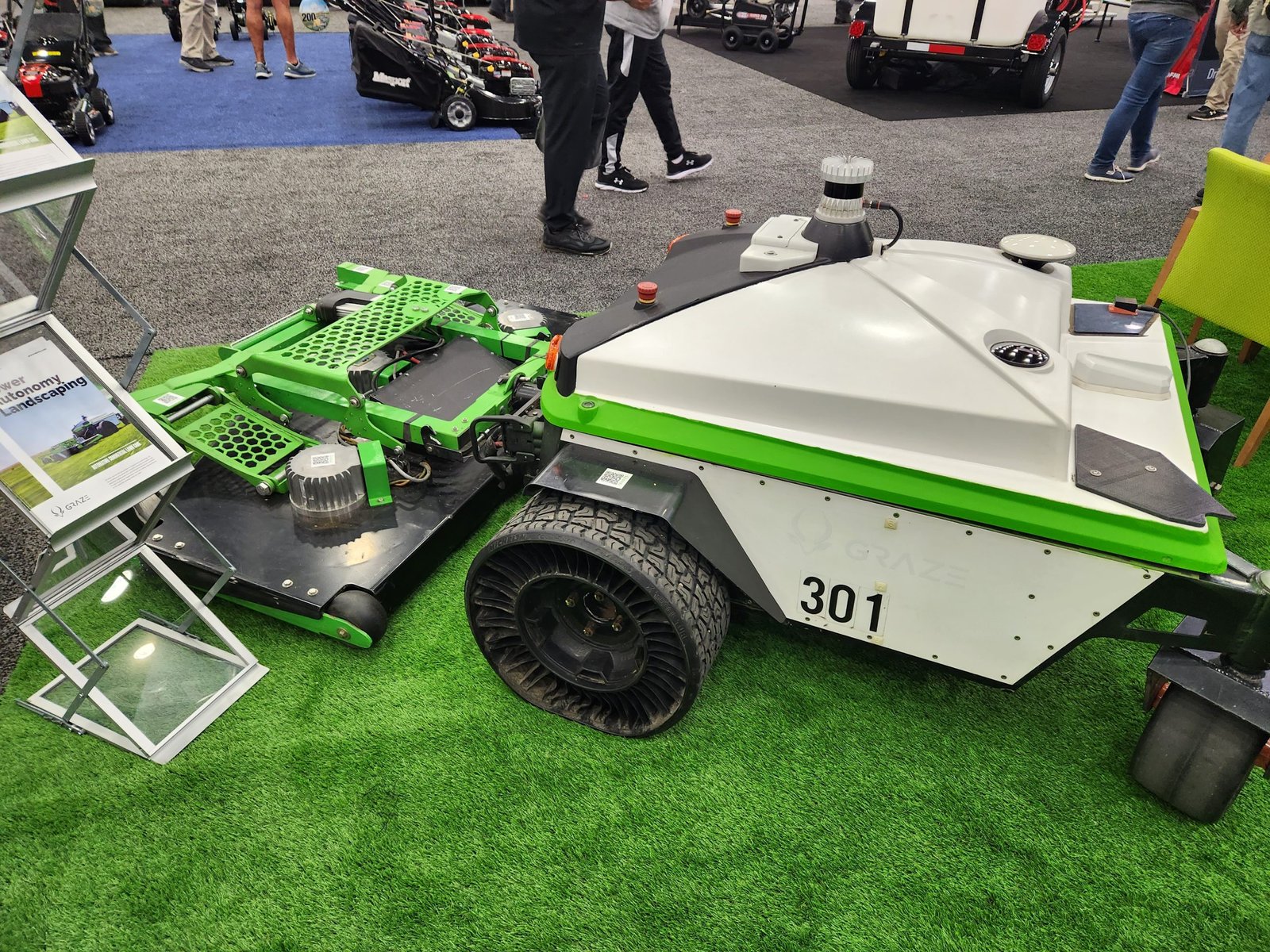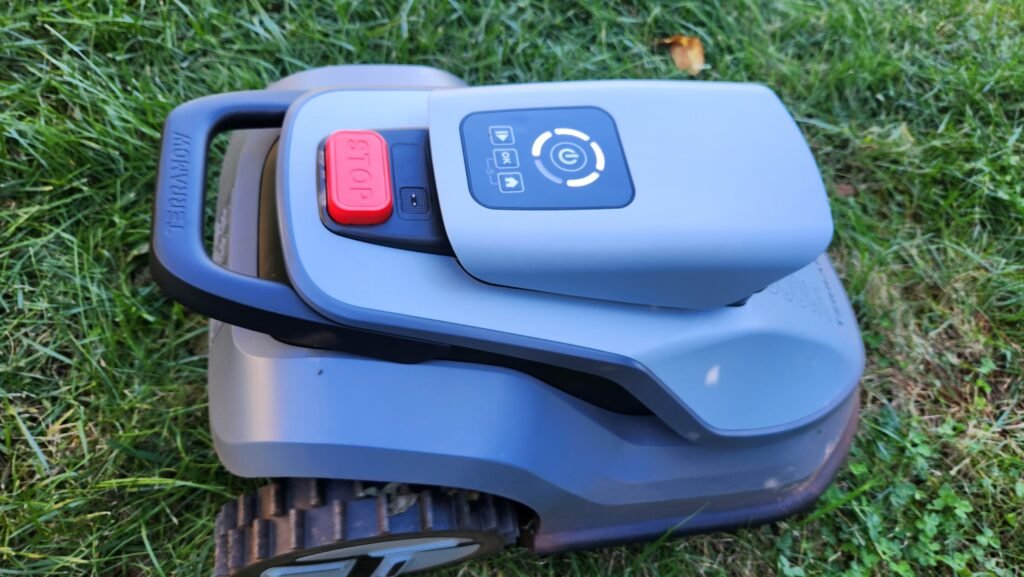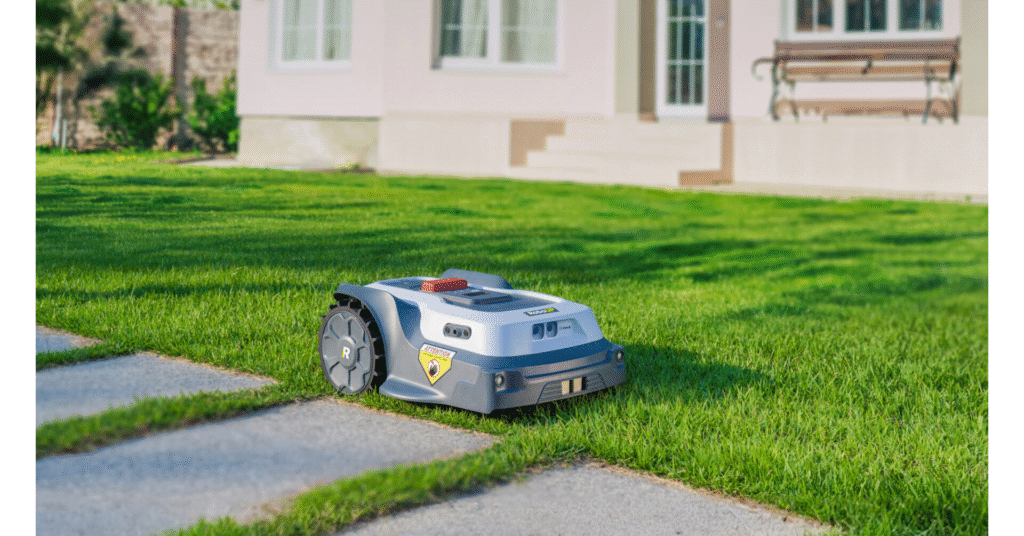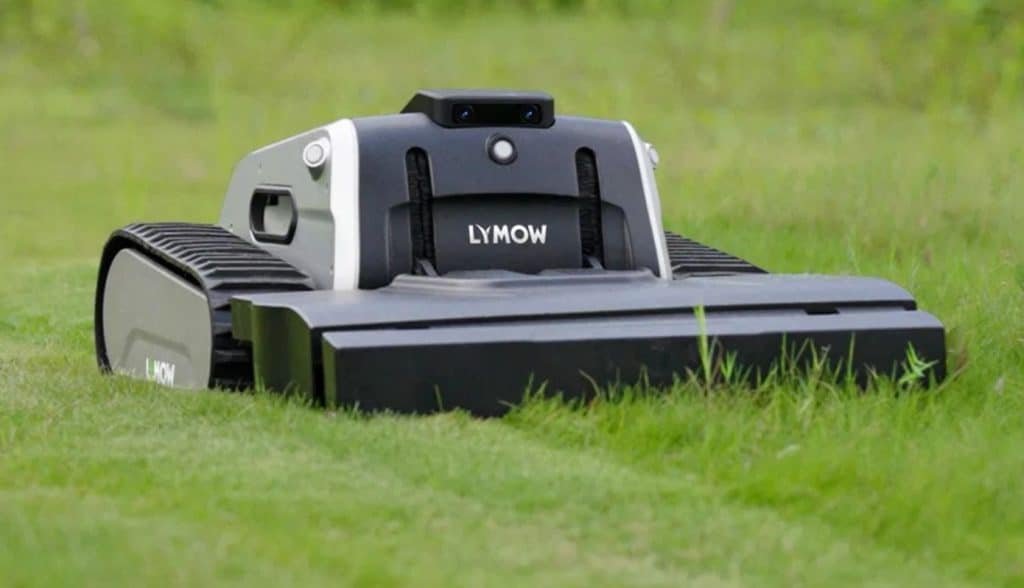There’s been an explosion of new robot mowers for home and residential use in the last few years. However, the commercial robot mower space moves a little slower.
Commercial robot mowers generally have more research and development behind them, which makes for a slower time to production.
But even so, many new commercial robot mowers are entering the market and one of those is the Graze Mower.
This large, commercial mower is packed with new technology and is designed to handle large municipal properties, golf courses, and other turf areas.
Below, we’ll look at what the Graze mower has to offer professional landscaping companies and those looking for a high-end commercial robot mower.
Who is Graze?
Many robot mowers come from established lawn and landscaping equipment manufacturers. But Graze is a new company built from the ground up to focus on bringing their vision for a robot mower to market.
Logan Fahey, the CEO of Graze does have experience working on a Husqvarna venture project called Robin Autopilot.
Currently, Graze is backed by venture capital money and individual investors to help fund its design and operations. They have production prototypes operating at well-known airports and golf courses around the country. These locations act as test beds for the mower as they refine the design and make improvements.
Graze is currently taking preorders for late 2024 delivery of their production units. You can secure a unit for $100 reserve price and there will be options to lease mowers for approximately $5K per month for the complete package.
Other options include purchasing the $100K mower along with a $1K/month subscription to access the software and support.
The Graze Mower
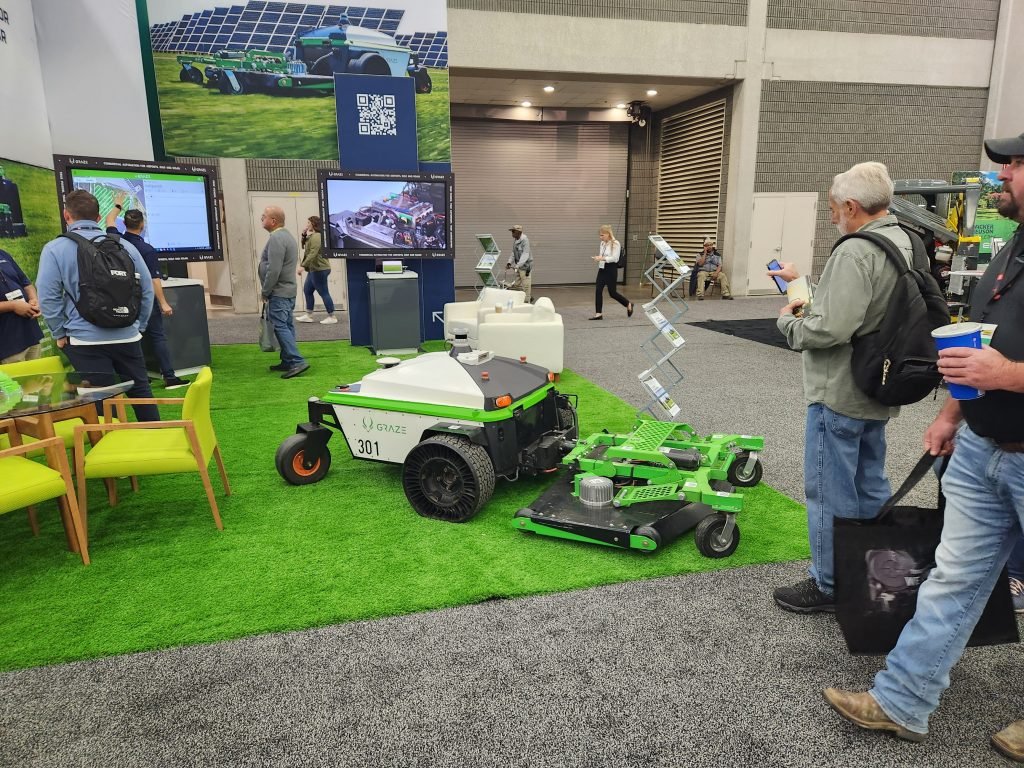
The Graze mower is not a beefed-up residential mower meant to work in larger settings. It was designed from the ground up to handle large commercial properties.
Unlike some other large commercial robot mowers, the Graze is all-electric. This helps keep noise down and also will mean lower maintenance costs over time.
The mower consists of two parts. The first is the drive unit, which is essentially the robot portion of the mower. This houses all of the electronics and sensors as well as the drivetrain. It runs on oversized airless tires for a soft ride that is easy on grass and also handles rough areas without the need for complex suspension systems.
Out in front is the mowing deck which has a cutting width of 60 inches and a front discharge. With a speed of about 3 mph, the Graze can mow 1.6 acres per hour. The onboard battery can run for 8 hours between charges. This comes out to just about 13 acres per charge.
However, the Graze can be paired with additional mowers to speed up the process. This can also be done to tackle different zones or cutting heights across the same property.
Graze Mower Navigation Technology
Graze advertises the mower as fully autonomous, and while this is true, it is only after the initial setup.
The Graze doesn’t use a perimeter wire and instead the operator controls the mower around the property to set the boundaries. This is similar to other commercial robot mowers.
The mower uses GPS to then map out the area within the border which then can cut autonomously.
For navigation, the Graze uses a mix of computer vision technology to map its surroundings and detect obstacles. This system works in conjunction with the GPS to provide overall navigation once the initial border is set up by the operator.
Graze hasn’t released the exact details on the computer vision technology it has used since its proprietary technology. However, it appears to use a type of LIDAR along with a video camera for its internal imaging system.
Overall, the Graze performed well in testing and could easily detect obstacles of all sizes. It had no hiccups during the demonstration that caused it to get locked up or stuck, which can happen with some vision-only mowers.
Controlling The Graze Robot Mower
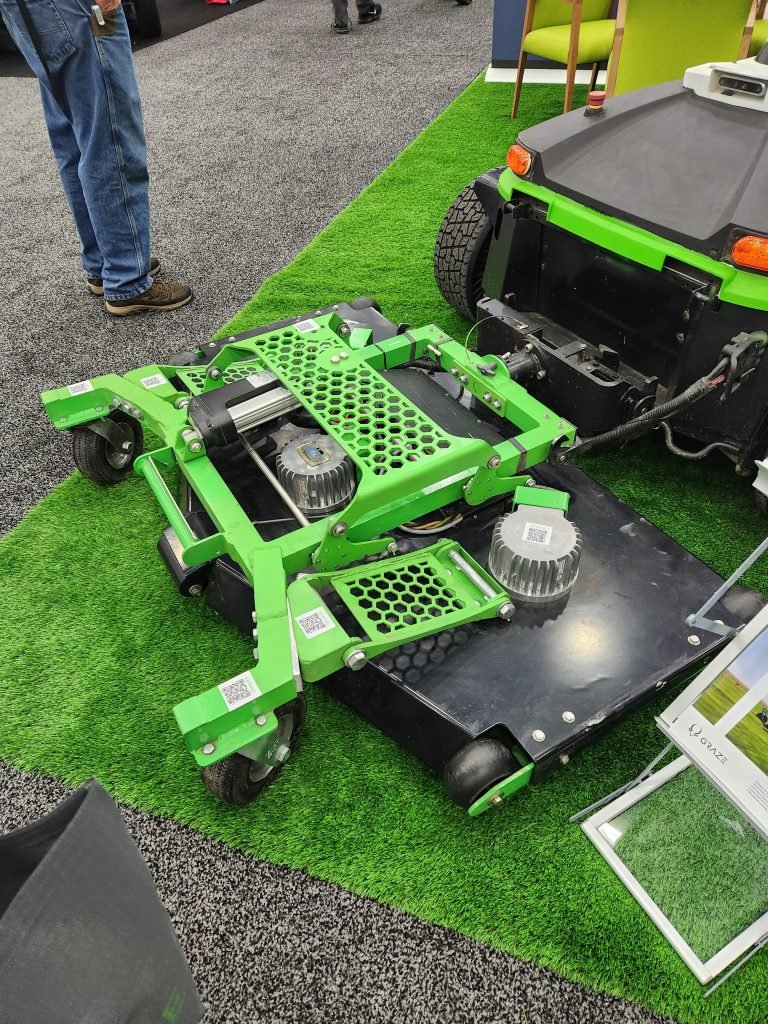
Once the operators set up the boundary for the mower, the app can take over from there. The Graze app works on either a smartphone or a tablet and you get full control over different zones as well as cutting heights.
The app updates the operator as it mows. The operator can also set up progress alerts at certain points to help better schedule pick-ups or other tasks around the property.
The version of the app we saw appeared to be a little bare-bones. It had all the features but lacked some of the polish we’ve seen in other apps, especially commercial apps.
However, this is a pre-production version of the app, and cleaning up the app and making the menus and navigation nicer shouldn’t be too difficult.
But overall, once the perimeter is set up, there is virtually no human interaction needed. The mower will determine the best route and start to mow immediately. If you are pairing two or more mowers, they will automatically communicate to determine their own route.
So whether you have one mower or several mowers, there is no extra work in setting them up if they are going to mow the same property.
Graze Mowing Performance
Despite being a new company, Graze is clearly well-funded and their pre-production models are definitely commercial quality. The mowing deck is solid and uses three steel mulching blades. The entire assembly looks and feels similar to well-known commercial mowing decks already on the market.
The entire system with both the robot drive unit and mowing deck is very quiet. You can easily have a conversation as the mower passes by and you won’t have to yell over it like with a gas mower.
Overall, this mower cuts as good as any commercial mower on the market. That isn’t too unexpected as the mowing aspect is already proven technology. The real x-factor is the automated technology used for navigation.
Of course, longevity is always a factor when investing in landscaping equipment. Graze offers a 5-year warranty, which is about normal for most commercial mowers. John Deer offers a 6-year warranty and Greenworks has 4 years for their commercial products.
However, with an asking price of $100K, we would like to see a longer warranty period or at least some extended coverage options. With a mower like this, there are question marks regarding how expensive repairs will be.
Grave Robot Mower Pricing
This is where things get interesting with the grave. The current asking price is $100K per unit. That covers the mower and you will own it. However, there is an ongoing subscription of $1K per month for the use of the software and overall upkeep of the system.
There is a leasing option which comes out to $5K per month and includes the hardware and the software subscription.
For comparison, something like the Wright Stander Autonomous ZK is priced at around $45K per unit (options can vary pricing). So essentially, that’s about half the cost and there is no ongoing fee for subscriptions.
The Wright robot mower is based on their already popular manual Stander commercial mower. The autonomous version uses a similar setup as the Graze where the operator sets up the perimeter and then the mower takes over.
This makes the Graze an expensive proposition for many businesses However, the Wright is gas-powered so it’s not a direct comparison, but it is something to consider.
We think the Graze pricing is likely aimed at municipalities and property owners first. However, the leasing options could be profitable for landscaping companies that have contracts in place for larger properties.
Graze Final Review
The technology and build quality of the Graze mower are sound. They also have an experienced team behind the brand. Performance is good and the Graze unit will likely be a contender in the commercial market as time goes by.
However, the current pricing may keep it out of the hands of landscapers looking to automate their jobs. There are cheaper alternatives on the market that have similar features to the Graze. However, the Graze price should come down as they ramp up production over the next year.
Overall, keep an eye on Graze as they will likely be a player in the commercial robot mower space in the coming years.

